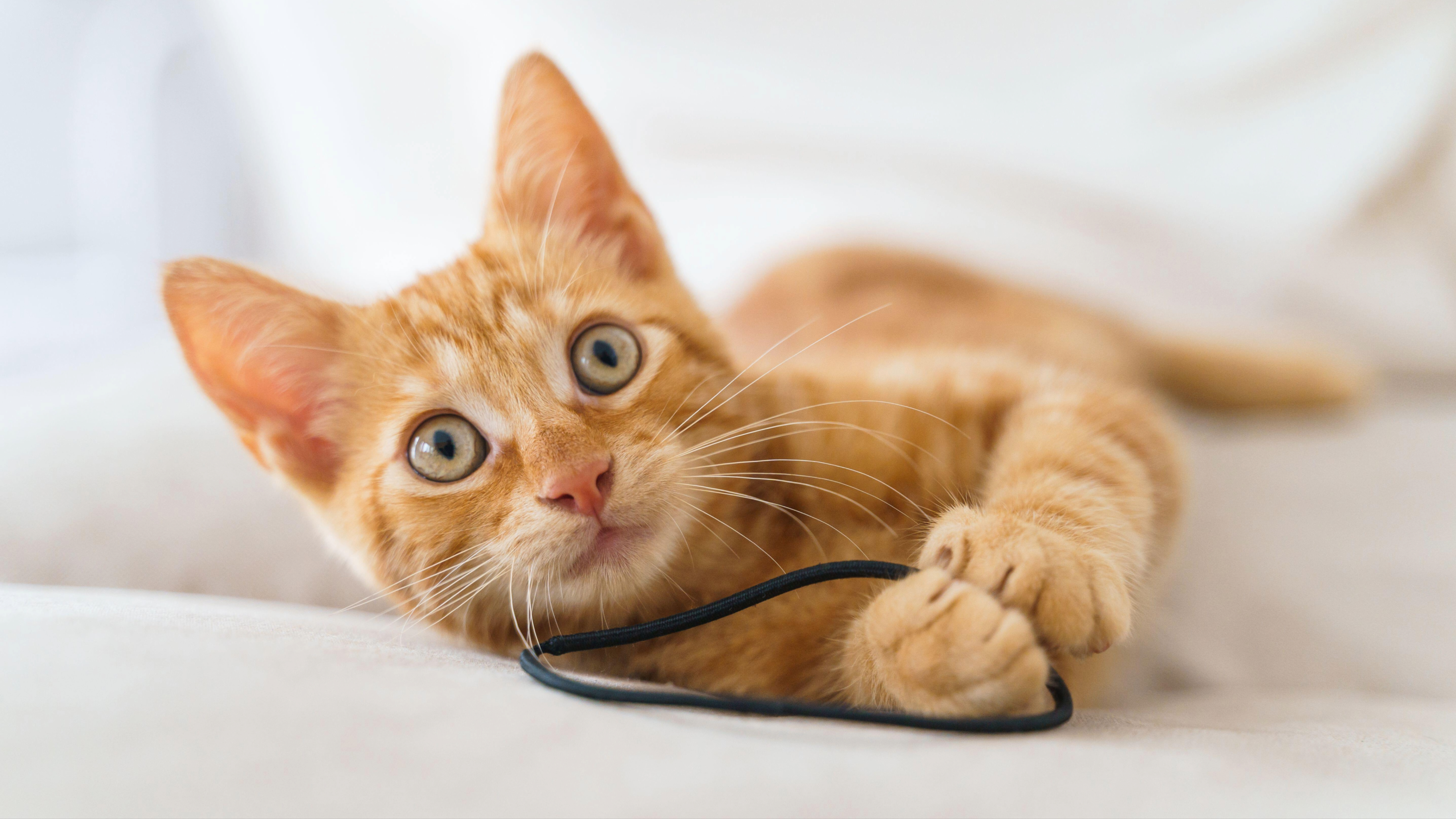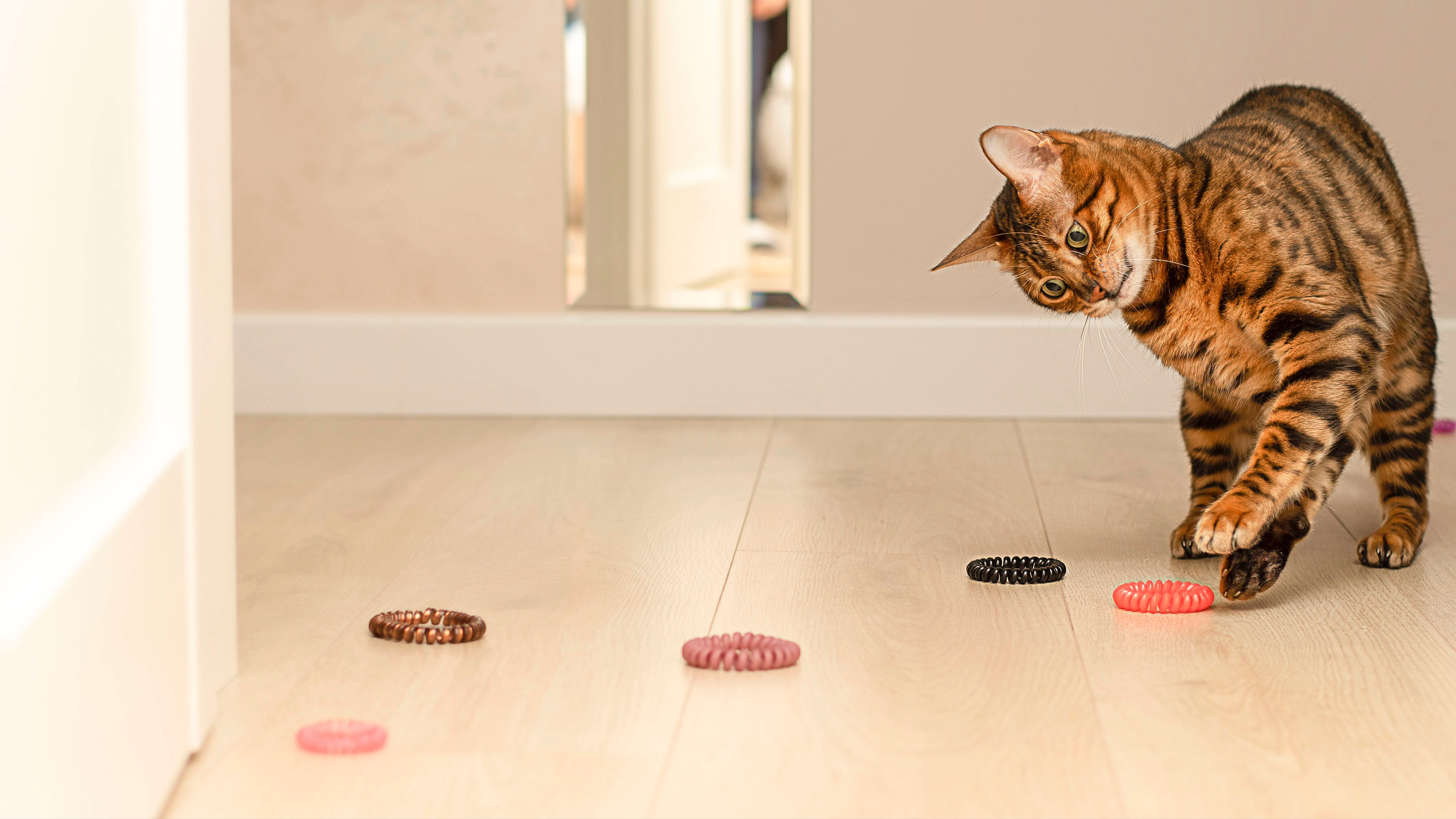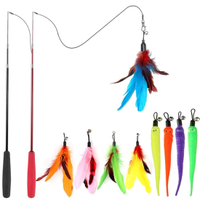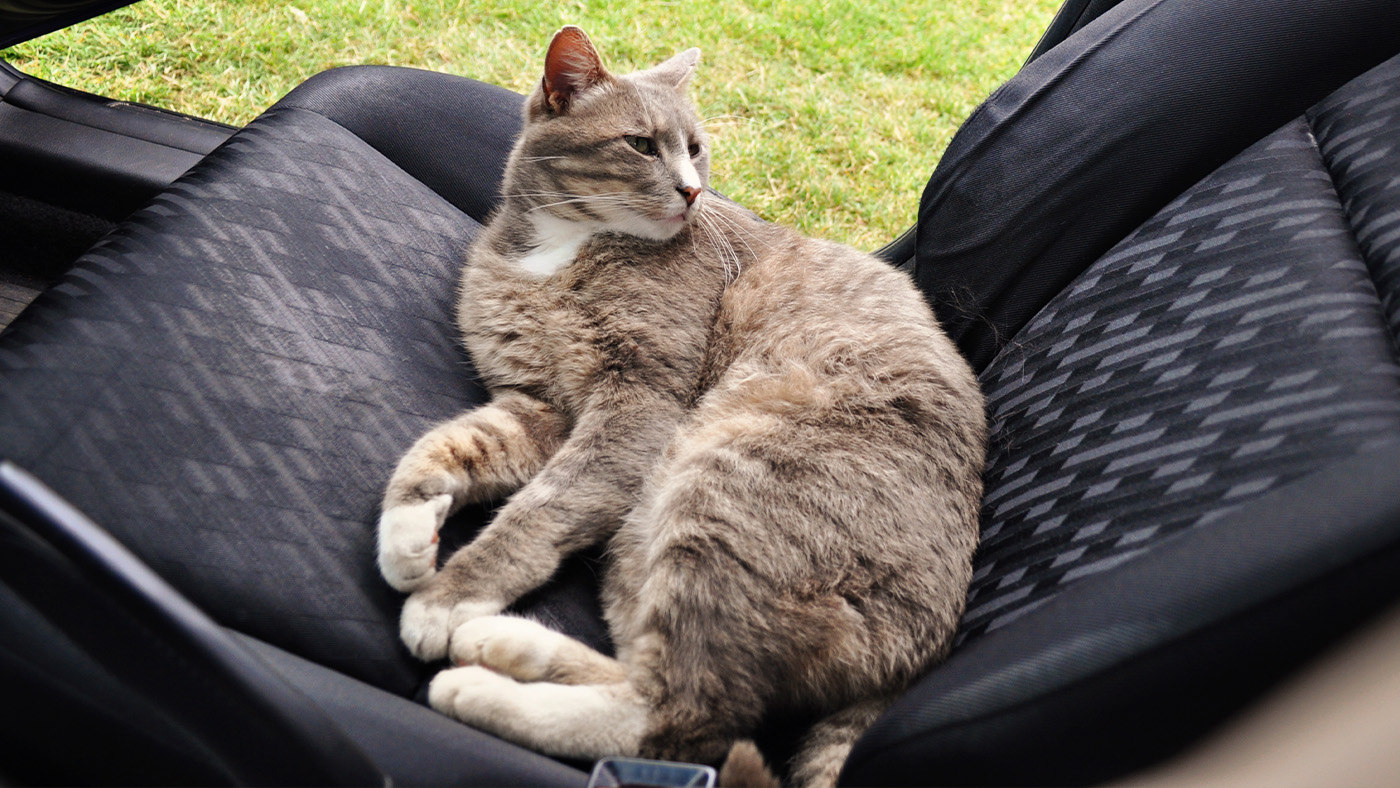Why do cats like hair ties so much? An expert explains
Why do cats like hair ties? We found out why these simple elastic bands are so appealing – plus, why you want to keep them out of your kitty's reach

Why do cats like hair ties? It's a question you may have found yourself pondering if you regularly find your feline friend playing with the colorful bands you use to fix your luscious locks in place.
As pet parents, most of us spend a lot of time researching and purchasing the best cat toys to keep our beloved bundles of fluff entertained and out of mischief. Yet cats being cats, it's often simple things like hair ties and cardboard boxes that they find the most captivating.
Hair ties look so uninteresting to us humans, so we were curious to find out what it is about them that makes them so enticing to cats. To help us out, we turned to expert vet Dr. Rebecca MacMillan who was more than happy to share her thoughts with us.
Below, she reveals why cats like hair ties. Plus, she explains why these small, seemingly innocuous items can be so dangerous to cats and how you can stop your kitty from playing with them.
Why do cats like hair ties?
When it comes to funny things cats do, playing with hair ties is definitely on the list. If you're anything like us, you may be wondering what it is about those colorful elastic bands you put in your hair that your feline friend finds so appealing, so we spoke to Dr. MacMillan to find out! Here's what she had to say...
1. Curiosity
One of the ways cats learn about the world around them is to investigate different objects as they come across them. In order to decide whether something is safe or unsafe, they'll use their paws to pick it up, pat at it or swat it.
"Cats are curious by nature and discover the world through play," explains Dr. MacMillan. "Kicking a hair tie around helps them to learn more about this object."
PetsRadar Newsletter
Get the best advice, tips and top tech for your beloved Pets
2. Texture
Have you invested in several of the best interactive cat toys only to find that your feline friend prefers playing with a hair tie? Blame it on the texture!
"Cats seem to like chewing on the elastic material of a hair tie," says Dr. MacMillan. Some hair ties are soft while some are crinkly, these textures are all exciting for a cat to explore!"
3. Movement
While we may have welcomed them into our homes and our hearts, domestic cats still have strong hunting instincts leftover from the days when they needed to stalk and kill prey in order to survive.
Even though you likely feed your kitty plenty of the best cat food each day, those survival instincts remain strong, which is why you'll so often see them engaging in predatory behavior with toys.
"The small, quick movements of a hair tie being batted around tap into your cat’s natural hunting instincts," Dr. MacMillan confirms. "The hair tie mimics the motions they would expect to see in their prey."
4. They're comforting
One of the little known facts about cats is that they have more than 200 million odor senses in their noses – compare that to us humans who have just five million. This means that their sense of smell is 14 times better than ours, so while we may not be able to smell our scent on a hair tie, our feline friend certainly can.
"For some cats, it may be because the hair tie smells of their owner, or perhaps they like the elastic smell," says Dr. MacMillan. "We can’t know for sure, but what we do know is that cats have a very keen nose and there is something about hair ties that particularly appeals to them."
5. Because they're fun
While things like texture, movement and familiar smell could explain why cats like hair ties so much, as Dr. MacMillan says, it could also be down to the fact that pawing at them and tossing them about is an enjoyable way to pass the time.
"Many cats just find them good fun to play with! They can be chewed, stretched, and easily thrown about. Playing is your cat’s way of keeping boredom at bay."
Is it OK for my cat to play with hair ties?

While our feline friends may adore playing with hair ties, Dr. MacMillan says it's important as pet parents that we don't encourage them.
"Hair ties can be extremely dangerous if swallowed, potentially obstructing your cat’s digestive tract. This could lead to your pet requiring life saving surgery," she explains.
"From cases I’ve seen in practice, it is rarely just one hair tie that a cat swallows but multiple, often unnoticed and over a period of time. This is how blockages can occur. It is not worth taking the risk so please keep hair ties well out of reach or safely stowed away."
MeoHui Interactive Cat Toys | Amazon
These toys have been the biggest hit in our house – so much so that we're on to our second pack! Offering outstanding value for money, this set comes with two teaser wands and a huge variety of attachments. Our four year old cat, Roxy, and eight month old kitten, Teddy, particularly love the feathers – which is brilliant because it lets them feel like they've caught a bird without any harm coming to the real life birds we love having in our garden.
How to stop a cat playing with hair ties
According to Dr. MacMillan, the simplest way to ensure your kitty doesn't play with your hair ties is to keep them out of reach.
"Try keeping them in a dedicated drawer or a jewelry box, so that your cat can’t see them," she suggests. "Make sure that all your family members know not to leave hair ties lying around. The same goes for any elastic bands too."
Make sure that when you remove the hair ties you replace them with plenty of kitty-safe toys for your fur friend to play with. Cats get bored just like we do, so if you notice that they're grooming incessantly, vocalizing excessively, scratching the furniture or fighting with other cats, these are all signs your cat isn't getting what it needs to be happy.
"You must engage in regular play sessions and provide your cat with plenty of positive attention, to keep boredom at bay," Dr. MacMillan confirms. We recommend two play sessions a day of around 15 minutes each and for those times when you're too busy to engage with your kitty, having a few of the best automated cat toys– on hand can be a real lifesaver.
You might also want to read about the importance of cat play and how to play with a cat.

Rebecca is a veterinary surgeon who graduated in 2009 from the Royal Veterinary College in London. She has a wealth of experience in first opinion small animal practice, having done a mixture of day-to-day routine work, on-call emergency duties and managerial roles over the years. She enjoys medicine in particular and she is proud to h––ave recently achieved a BSAVA postgraduate certificate in small animal medicine (with commendation). She writes on various feline and canine topics, including behavior, nutrition, and health. Outside of work and writing she enjoys walking her own dog, spending time with her young family and baking!
Recent updates
This page was last updated on February 18 by Kathryn Williams.
Edited by Megan Milstead.

Kathryn is a freelance writer who has been a member of the PetsRadar family since it launched in 2020. Highly experienced in her field, she's driven by a desire to provide pet parents with accurate, timely, and informative content that enables them to provide their fur friends with everything they need to thrive. Kathryn works closely with vets and trainers to ensure all articles offer the most up-to-date information across a range of pet-related fields, from insights into health and behavior issues to tips on products and training. When she’s not busy crafting the perfect sentence for her features, buying guides and news pieces, she can be found hanging out with her family (which includes one super sassy cat), drinking copious amounts of Jasmine tea and reading all the books.

